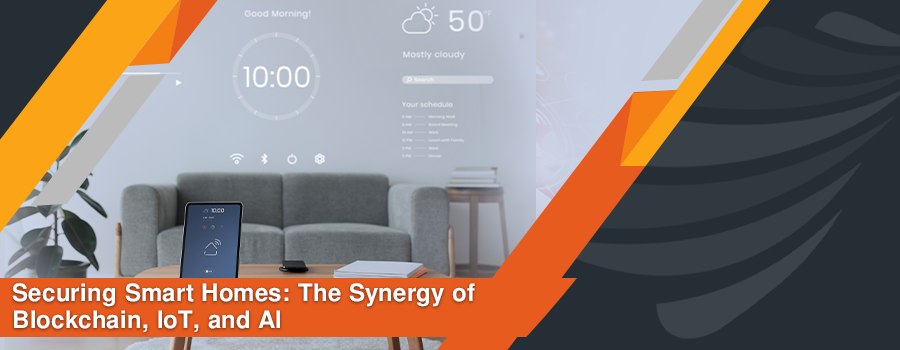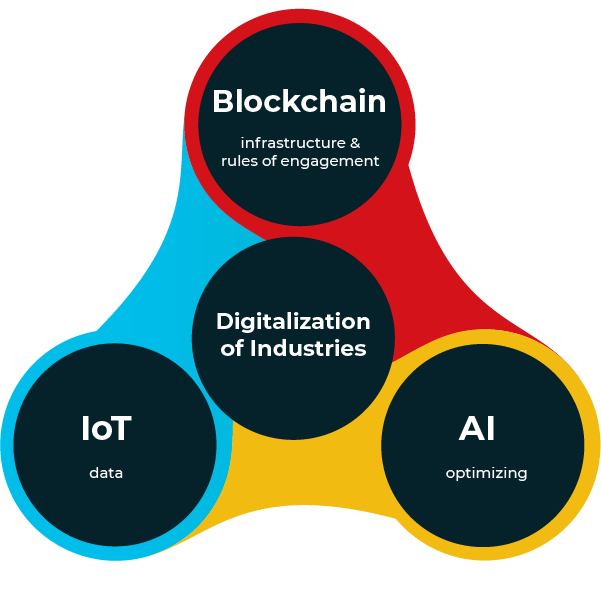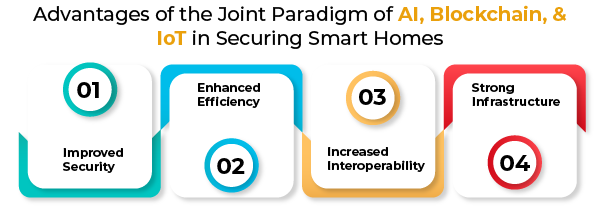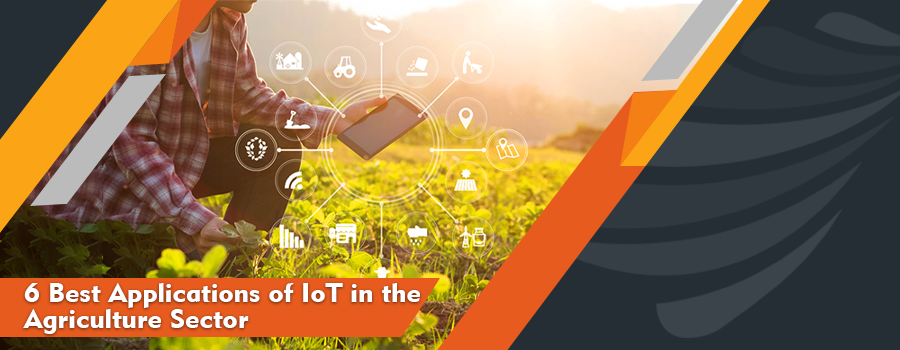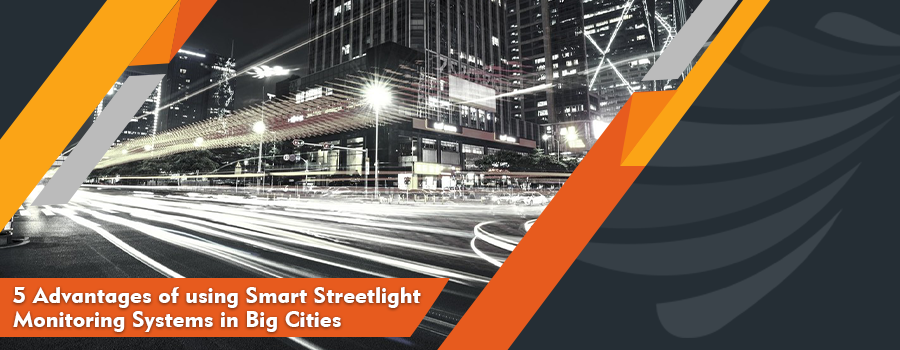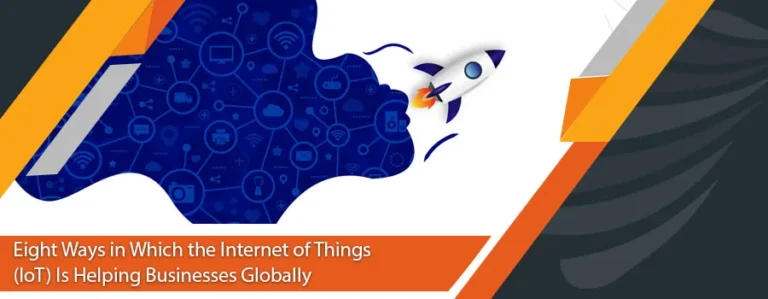A smart home is one of the promising innovations of the Internet of Things (IoT). It brings ease to daily life practices and assists people in enjoying the best facilities. Smart home devices may include smart thermostats, smart locks, lighting control systems, home entertainment systems, home appliances, and many more.
There is a connection between all smart home devices; therefore, we can access them from a central point such as a laptop or mobile phone. With the exponential increase in the deployment of smart home automation, we observe several security concerns.
High-security issues may allow hackers to control the system completely and steal personal or business information. They can even easily end up in fraudulent transactions and identity theft.
This article highlights that conventional security schemes cannot handle the unique security issues linked with smart home devices. Therefore, we have considered the latest technological advancements to address this issue.
What is Smart Home Automation?
Smart home automation is a hardware, electronic interface, and communication network connecting electronic devices at home via Wi-Fi connectivity. With the function of sensing, controlling, and actuation, it collects data, analyzes situations, and makes informed decisions. It allows the devices to perform smart actions. Homeowners worldwide can access and control it via their laptop or smart mobile.
There are different advanced security systems installed in smart home automation. One of them is Asset Guard. It is a fence-mounted intrusion detection system. With the use of stereo Doppler technology motion sensors, it provides warning of threats before any such event occurs.
Vulnerabilities and Security Risks in Smart Homes
People are shifting towards smart home automation to get comfort and security—however, the design and connection of IoT devices open doors to several hackers. Among many reasons for protection in smart home devices, design flaws, poor configuration, and lack of encryption and interoperability are at the top.
According to a recent report on the use of smart devices, IoT cyberattacks increased from 32 million in 2019 to over 112 million in 2022. Data evaluation shows that malware incidents are growing each year by 87%. The worst cases of IoT cyberattacks may include data breaches, identity theft, fraudulent transactions, household or important documents, and even mentally and physically torturing house owners and their relatives.
Challenges in Securing Smart Homes
Despite providing advanced solutions, smart homes are still at risk. Some of the main reasons for security threats in smart homes are:
• Lack of interoperability
Incompatibility is the most common issue in smart home devices. Installation of different devices won’t work if they do not interconnect. Many IoT solutions work only with a predefined infrastructure or designed hardware. For example, Apple devices don’t work with devices of other brands. It has its home platform to control devices at home. In this system, only those devices work that comes with the authorization of Apple.
• Lack of Encryption
Encryption plays a major role in protecting data transmission in smart home automation. Encryption prevents unauthorized access or cyber-attacks on sensitive data. Several reasons for the lack of encryption in smart homes include inconsistent implementation, weak encryption, poor configuration, and firmware updates. Concisely, lack of encryption results in data breaches, identity theft, authorized access, and manipulation.
• Single Point of Failure
A central server controls the connection and processes all tasks. If there is any issue or disruption in the server, the entire system, including all devices, gets affected. The severe cases include complete system hacking and shutdown of the whole circuit.
• Weak Authentication
Many smart home devices rely on weak or default usernames and passwords, making them susceptible to brute-force attacks. Users often fail to change default credentials or use strong passwords, leaving their devices vulnerable to unauthorized access.
Understanding Blockchain, IoT, and AI
Today, Artificial Intelligence (AI), blockchain, and IoT are revolutionizing different industries. They have played a crucial role in improving business operations and modernizing living standards. Their main features are:
• IoT
IoT is a connected network of physical objects embedded with software, sensors, and other technologies. It provides a strong connection and exchange of data over the internet among different devices. IoT supports home automation by interconnecting different devices and allowing the owners to control them via mobile or laptop.
• Blockchain
Blockchain is a kind of shared database. The storing of data in blocks linked via cryptography makes it unique. Its decentralized distributed ledger helps increase transparency, security, privacy, and trust in business operations. Blockchain is a distributed ledger technology that works like a safe register to store information.
• Artificial Intelligence (AI)
AI is the simulation of human intelligence using computer systems. It works by analyzing big data and predicting future outcomes. Its main applications include speech identification, image recognition, natural language processing, and expertise in other systems.
The Synergy of AI, Blockchain, and IoT
Integrating AI and blockchain has opened doors to enhance the implication of IoT in smart homes. IoT involves collecting and networking. Blockchain provides a secure infrastructure to define operations and AI rules and optimize all possible connections between these technologies. AI, IoT, and blockchain synergy emerge new business models and provide the best user experience.
Advantages of the Joint Paradigm of AI, Blockchain, and IoT in Securing Smart Homes
Combined with AI and blockchain, it enhances the IoT applications in smart homes. Among numerous benefits, the most prominent are:
• Improved Security
By analyzing present data with strong algorithms, AI identifies and predicts security threats, while blockchain ensures the secure sharing of data. Also, we can block threats and similar generated ones. Whereas blockchain ensures that the strong AI tools and computational data remain protected and only authorized persons can access them.
• Enhanced Efficiency
We can optimize energy usage and ensure high-security system maintenance with AI. It provides predictive analysis, monitoring, and optimization. On the other hand, blockchain allows efficient contract management and energy distribution. Overall, the integration makes smart homes a cost-effective and profitable choice.
• Increased Interoperability
Integrating AI and blockchain with smart IoT devices allows secure connectivity and helps develop a smart home ecosystem. Through adaptive interfaces and semantic mapping, AI overcomes the gap between disparate systems and allows efficient data exchange. In comparison, blockchain provides a secure environment for the interaction and connectivity of IoT devices. The combination of AI and blockchain provides seamless communication and secure data sharing.
• Strong Infrastructure
Strong AI algorithms resolve issues related to privacy, security, and latency. Using big data provides strong analysis and prevents the system from failing. On the other hand, blockchain via decentralization eliminates the issue of a single point of failure in a cloud server. This way, we can make data analysis more reliable and efficient. The integration allows better decision-making results in smart homes’ strong and reliable infrastructure.
Challenges of Implementing AI, Blockchain, and IoT in Securing Smart Homes
Despite the enormous application of the synergy of AI, blockchain, and IoT, there are several challenges that we must consider to experience the best outcomes. Implementing these technologies requires strong regulatory frameworks, cyber laws, and policies. Without strong government support and regulations, companies cannot ensure a highly secure environment for their customers.
Also, several ethical and social issues of using these technologies still need to be addressed. These issues are mainly related to privacy, bias, security, and the use of data. Moreover, integrating IoT, AI, and blockchain needs high investment, monitoring, and maintenance of the systems.
Government and higher authorities must run such programs to support technological evolution for better security of citizens. Lack of awareness is also a main issue. Many fears smart homes due to security and privacy concerns. We can resolve such matters with the spread of awareness and support programs.
We need high research and investments to experience the most benefits of integrating these leading technologies. Also, with the rapid technological updates, companies must train professionals working in installation and maintenance to meet market demand. They must remain aware of the advanced updates and be ready to deal with strong malware and security threats.
Future Aspects
Technological adaption evolves; hence, we will see more innovations in this area in the upcoming time. With advanced research and development, we can minimize the challenges in adopting these technologies. Integrating AI, blockchain, and IoT can transform business practices, healthcare, and daily life. It is an era of huge inventions and updates in AI and technology. Therefore, we must involve in research to contribute to the best outcomes. It is the best way to secure a position in the upcoming modernized market.
Conclusion
Smart homes provide high-end facilities and assistance in improvising daily tasks in a highly managed way. However, several security concerns are present due to the huge connectivity of different devices. The synergy of AI, blockchain, and IoT helps to overcome these challenges. AI analyzes data and helps to provide predictive analysis, whereas blockchain enhances secure data sharing and authorization. In this way, we can securely enjoy smart home facilities.

